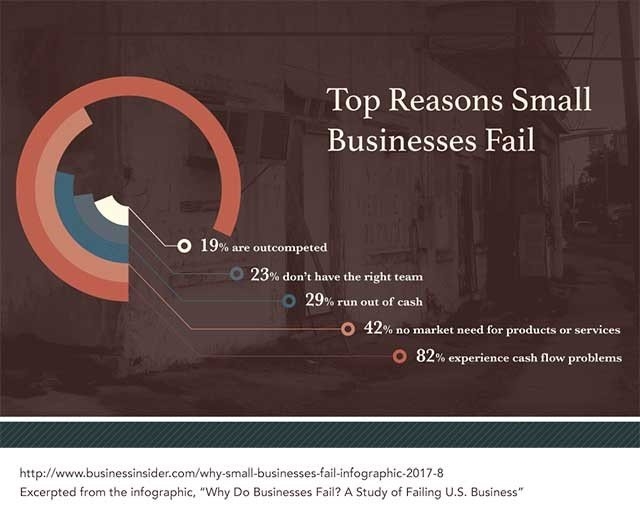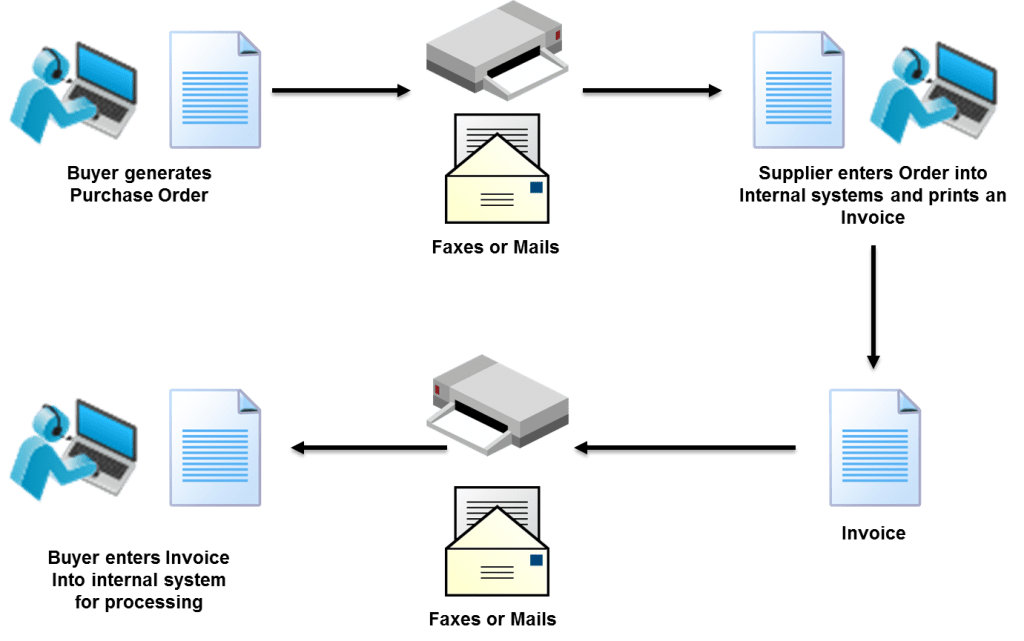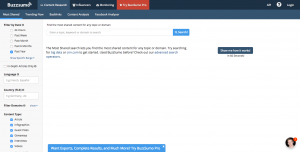People often say that cash is king when it comes to the management of any business, and it is true. More businesses fail due to poor cash flow than any other reason. Don’t just go by my word. A US bank study estimates that 82% of small businesses fail due to cash flow resulting in not having the money to pay business debts. Today, we’ll share 3 simple ways to improve cash flow so you have the money needed to support business growth, as well as for current monetary needs.

Image courtesy of SCORE
Cash flow management
Whether your company is thriving or struggling, it is important to handle your cash flow efficiently, and for most businesses, it is crucial to manage cash flow efficiently. And, cash flow is never more critical than in the growth phase of your business when failure to have enough cash on-hand strangles your business; cutting off opportunities for growth.
It’s survival of the fittest in business as in biology and cash flow is the #1 reason why businesses fail. Surprisingly, many of the businesses that fail turn a profit, simply running out of liquid cash needed for critical business functions such as paying employees, paying creditors, and keeping the lights on.
Maybe an example will help you understand why you need to improve cash flow to fuel your business.
Let’s say you run an e-commerce business. You need inventory if you want to keep cash flowing into the business. Poor cash flow may mean you can’t pay your suppliers, who cut off future inventory shipments so you can’t fill customer orders. Customers getpissed off and share their frustration across social media and in their physical communities. Soon, orders dry up and you have few options other than to close your electronic doors. If you don’t have enough cash to pay for mission-critical functions like inventory, electricity, and rent (or web hosting in an e-commerce business), you may have to close in as few as a few hours.
You face a liquidity crisis when cash inflows (normally from customers) don’t match outflows for critical functions. The gap between the time you have to pay your suppliers and the time you collect money from your customers is a problem, and cash flow management is the solution.
Unexpected events arise with alarming frequency, such as the current pandemic that seemed to shut down the economies of most countries within a matter of days. Now, you owe money to a variety of folks and, with your business closed due to the pandemic or sales drying up, you can’t pay the money owed to creditors and employees.
That’s why you must maintain a liquidity level that helps you to make it through those tough times, allowing you to continue to run your company. Simply put; managing cash flow means delaying cash spending as long as possible (reduce cash outflows) while encouraging your customers to pay their invoices as quickly as possible (increasing cash inflows).
Let’s take a look at how you can improve cash flow in your small business.
Improve cash flow in 3 easy steps
The first step to improve cash flow to plan out where cash comes from and how much goes out at any given time. This plan is called a “statement of cash flows” and is a critical accounting document. Using historical information, as well as projections of sales and cash needs, the firm plans it’s day-to-day cash needs then adjust their spending to ensure they stay cash-positive every day.
While planning doesn’t improve cash flow directly, it helps manage your cash flow to avoid running into problems that might impede the operation, like those mentioned above.
Get people to pay you
One of the easiest ways to improve cash flow is to get the people who owe you money to pay you as quickly as possible. For consumer-facing businesses, it’s customary to pay for items before purchasing them, whether online or in a brick and mortar store. Thus, this isn’t an option. For other businesses, owners commonly offer a discount for bills paid within 10 days while allowing up to 30 days for payment; so-called 2/10, n30 in accounting parlance.
To speed payment, bill the customers as soon as possible and ensure invoices are as clear and detailed as possible. Send invoices electronically to ensure they reach customers quickly. EDI (electronic data interchange) speeds payment processing through coordination across buyers and sellers, so that’s a great investment (see below to see how manual processing slows the payment process).
 Image courtesy of EDI Basics
Image courtesy of EDI Basics
Consider sending invoices more frequently, for instance as each order ships rather than waiting until the end of the month to invoice customers. I once worked with a client that billed before shipment to ensure payment came in before the money needed to go out.
A payment tracking system, built into EDI solutions, helps you track who owes you what. Send reminders when invoices pass a certain age then continue sending reminders until the customer pays. Experience indicates that the less contact you have with a client, the less likely you are to get the money that they owe you, not without using a Skip Tracing service, anyway. Offer incentives to clients who pay in a timely manner, such as a discount on future purchases.
Look at short-term financing options
Establishing a line of credit with your bank is a great way to avoid cash flow problems. With a line of credit, you have cash to cover shortfalls and you pay the money back once you receive cash from customers. Another financing option, called factoring, allows you to sell your receivables (money owed on invoiced items) to a 3rd party at a discount. Both options improve cash flow and keep your business afloat.
However, both financing options increase your cost of doing business. So, good cash flow management helps you avoid paying these additional costs.
Effectively manage your assets?
Asset management is a great way to improve cash flow and software helps ensure you manage your assets efficiently.
For instance, rent equipment and facilities rather than buying them, at least in the short run as this avoids a high up-front cash outlay. Maintain owned equipment as recommended by the manufacturer to ensure you don’t lose productive time to break-downs and reduce costly repairs required when you delay maintenance. Sell unneeded or obsolete equipment to improve cash flow.
Plan effectively to ensure sufficient inventory on hand to handle customer needs without ordering excess inventory. As customer needs change, excessive inventory easily becomes outdated and useless. This is especially true in markets where customer needs or technological changes require the development of new products.
Business & Finance Articles on Business 2 Community
(46)








